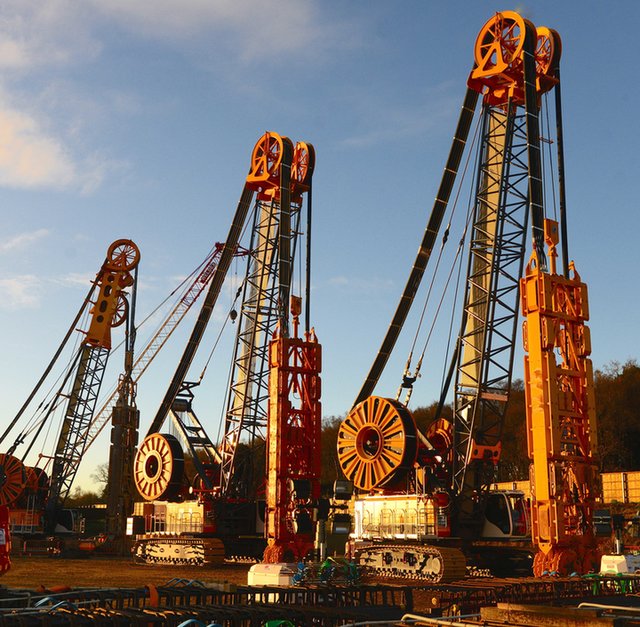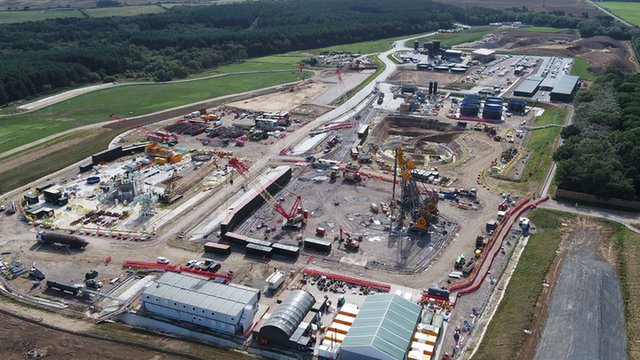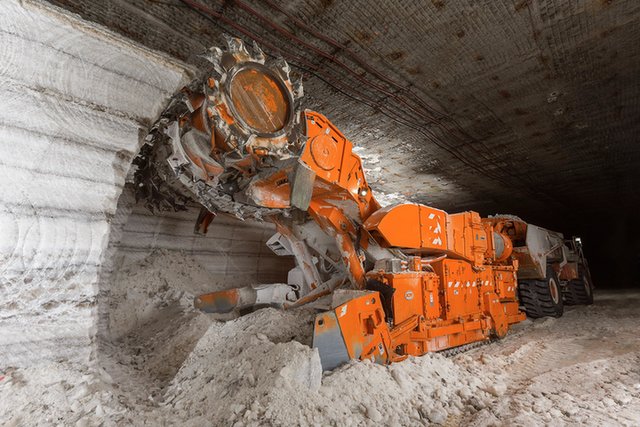Underground Technology
Woodsmith potash mine: showcasing the future of underground technology
Sirius Minerals has invested £3.2bn into its Woodsmith potash mine in the North York Moors, a highly ambitious project that aims to produce ten million tonnes of polyhalite a year by 2024. Still under construction, the mine is a technological marvel, as JP Casey finds out


The English county of Yorkshire is unique in the mining world: it has access to the world’s only mined source of polyhalite, a form of potash useful in the production of fertiliser because it contains potassium, magnesium, sulphur and calcium, four of the nutrients all plants need to grow. The deposit was first identified by Cleveland Potash in 1968, but it was not until 1973 that the first potash was extracted at Cleveland’s Boulby mine, 13 miles north of the Woodsmith site along the same deposit.
With the United Nations predicting global fertiliser demand to increase from 44.9 million tonnes (Mt) in 2015 to 50.2Mt by 2020, and demand for potash alone to increase from 5.6Mt to 5.8Mt over the same period, the deposit has attracted interest from Scarborough-based Sirius Minerals. The company aims to challenge the Boulby operation, now owned by Israel Chemicals, and has invested £3.2bn ($4.19bn) over more than five years to build one of the most ambitious mining projects in the world atop a resource base estimated to be 2.66 billion tonnes.
With a main shaft that plunges deeper than Finland’s Pyhäsalmi mine, the deepest in Europe, and an underground material transport tunnel that stretches almost as far as Crossrail, Sirius’ Woodsmith mine promises to be a technological marvel, provided it can begin operations on schedule and on budget.
Boulby potash mine. Credit: Sirius Minerals.
A tunnel as long as Crossrail
The mine’s most impressive feat of engineering is a 37km tunnel currently under construction, 340m below ground level. When complete, mined polyhalite will be brought up into the tunnel and placed on vast conveyor belts that will transport the mineral from the mine’s location, south of the town of Whitby, to Sirius’ Wilton processing plant near the North Sea coast. From there, the polyhalite will be transported to the company’s Teesside harbour facility and exported around the world, completing a process of transportation that will be able to handle up to 20Mt of polyhalite ore per year.
“While it's a large development and a large project, we're actually tunnelling in a rock that is relatively easy to cut, from a tunnelling point of view,” says Graham Clarke, operations director at Sirius Minerals. “It's also relatively stable, and we're not going through any cross measures; we're not going from one geological horizon to another, which is where tunnels normally have more issues.
The mine’s most impressive feat of engineering is a 37km tunnel currently under construction, 340m below ground level
“It was a challenge,” he says, referring to the planning process ahead of construction, “but the approach is that if you set out to do something, you can actually achieve anything if you believe you can and you put the right mindset to it.”
Keeping the project as simple as possible has aided construction and enabled the company to set ambitious dates of 2021 for reaching the polyhalite reserves, and 2024 for the start of commercial production. Sirius considered building a pipeline to transfer the polyhalite to the Wilton facility, a solution dismissed both for the environmental damage a pipeline could cause to the moors and due to the difficulties in mining polyhalite, transporting it back to the surface, and then into a separate pipe.
“You're mining the mineral, you're keeping it dry, all you have to do when you get it to the end of the tunnel is to crush it, and then re-granulate it into fertiliser granules,” says Clarke. “Everything we mine is a tonne of profit.”

Cranes at the Woodsmith operation. Credit: Sirius Minerals
More than half of the country’s coal mines are managed by pro-Russian separatist militia. Credit: DmyTo/Shutterstock.
The deepest mine in Europe
Sirius is also in the process of sinking two shafts down to the polyhalite deposits, which are located 1.5km below the Earth’s surface, and up to 70m deep in places. Diaphragm walls are currently being installed at the service shaft to ensure the passages are stable and waterproof, while excavation of the parallel production shaft is underway.
Clarke calls the sinking projects a “technically challenging thing”, but stresses that knowledge about the local geology has aided in construction efforts. Both Sirius’ own exploration efforts and information gathered at the Boulby Mine helped the developers establish a clear idea of the mineralogy of the region, and how best to build the shafts.
Constructing the Wilton facility will be “simpler”, according to Clarke, as that requires building a general processing facility above ground, rather than undertaking unique construction work beneath the surface – another example of Sirius’ attempts to simplify the construction process.
The vast scale of the operation has created considerable excitement around the project, which could disrupt the existing polyhalite market
The vast scale of the operation has created considerable excitement around the project, which could disrupt the existing polyhalite market. Clarke predicts that when fully operational, the mine alone will reduce the UK’s trade deficit by 7%. Moreover, a project of this size poses a significant threat to Israel’s control of the polyhalite supply, which has been the world’s only commercial polyhalite mine since 1973.
In 2017, the Boulby Mine achieved production of 1Mt of polyhalite over its 44-year lifespan, while Sirius expects production at Woodsmith to be 1Mt per annum by 2022, and ramp up to 10Mt per annum by 2024.
Preventing projects and costs from spiralling has been key for Sirius, which has had to rely on raising funding in separate rounds to complete each stage of the project. The first $1.2bn was raised in late 2016, to begin construction work, and Sirius is currently seeking up to $3.6bn by the end of the first quarter of this year to continue operations.

The Woodsmith potash site in September 2018. Credit: Sirius Minerals.
Making profits and making a difference
One of the key challenges Sirius has faced has been in continuously securing funding for the project. “We’re not a large global mining company with a huge bank balance to back us up,” Clarke explains.
The company has had to pre-sell its polyhalite product and take pay-or-sales contracts to convince potential backers that supporting the project is not a financial risk. And while Sirius’ success in this area has generated income to fund further construction – it has sold contracts for around 8Mt of polyhalite, equivalent to the first three years of the mine’s projected production – it has left the project on somewhat unstable financial ground.
Sirius increased its target for round two funding by around $600m after the first round of construction, and should the mine not achieve commercial production on schedule and ramp up production as quickly as it expects, the company could suffer significant financial losses.
Sirius increased its target for round two funding by around $600m after the first round of construction
But Clarke believes the impacts of the mine will extend beyond making profits, into “making a difference”.
“I'm a mining engineer, I've been in mining in the UK for 30-odd years,” he says. “I've seen the demise of mining in the UK. Historically, we've got a huge tradition for mining in the UK. From my personal point of view, to be able to do something that puts mining back on the map, [and] demonstrates that, in the UK…we can actually still do this stuff, that's a big thing.
“We're actually setting a global standard for how you can do this. People are proud to be part of this, and quite rightly.”

Tunnel boring machine used at the mine. Credit: Sirius Minerals.
